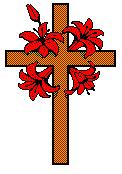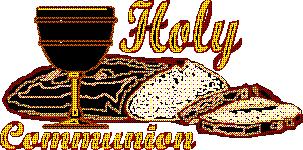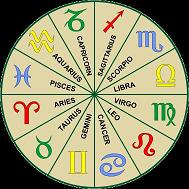Christian Era Calendars summarizes key identifiers for numbered
dates and names within the year. Roman and Jewish influence
involving weeks, months, astrology and mythology prevail upon
early church history. Sabbath continuity combines with Easter
and Christmas origins. New Testament articles serve spirituality
embracing Jesus and calendar science.
 Christian Era
Calendars
Christian Era
Calendars
Readers that delight in having knowledge of the Holy Bible will supplement their
understanding of the New Testament
with the latest of Christian_Era_Calendars
articles. The four gospels: Matthew, Mark, Luke and John, were
written between about 70 AD and 130 AD At the time of writing, the
apostle authors were primarily Jewish sectarians that used
traditional Jewish Calendar reckoning. The earliest form of the
Roman solar calendar likewise influenced New Testament scriptures. Emerging Christianity
would share a dual calendar system for time recording. Consider that
the Jewish Calendar is still in use in our modern times and that the
Roman solar calendar has evolved to become universally applied as
the calendar we use today. Comparing both the Jewish Calendar and
the Roman Calendar discovers deeper insight for Holy Bible study. Christian_Era_Calendars tracks
some 2,000 years of world history.
New
Covenant Sabbath Day
God ordained the Sabbath Day
as a special day for all Judeo-Christian heritage. Christianity
celebrates the sacred seven day week according to the solar
calendar. Christian observance of Sunday begins at Saturday midnight
and continues until Sunday midnight. Both cases for Judeo-Christian
religious use of the seven day week subscribe to the Ten
Commandments given to Moses. To maintain the covenant, the Sabbath
is a day to commune with God.
The Sabbath serves our spiritual needs. The Sabbath contrasts other
days of the week, wherein mundane needs of daily survival are met.
Contemporary Messianic Judaism respects both Jewish and Christian
philosophies regarding the sacred Sabbath day observance. The fact
that either faith repeats seven days of the week to uphold the
Sabbath forms the spiritual backbone of lunar and solar calendars.
Religious direction for humanity stems from early biblical
generations, customs and traditions. Observing the Sabbath day as
holy is mandatory in both theologies. The Ten Commandments establish
the Sabbath. Work accomplished on that day should be done for God and humanity. Saturday is
the Shabbat of Jewish culture and Sunday is the Sabbath of
Christianity. The seven-day week galvanizes religious observation of
the calendar year.
The idea of Sabbath was a continuance of Jewish lore. Final position
of a Christian Sabbath on Sunday arose from the growing movement and
a series of calendar modifications. Broader concerns of the calendar
functions are visible by surveying roughly 400 years worth of
history. We mix factual evidence about time recording with the
spiritual, supernatural realm made manifest in the Word. Seriously approaching
aruva, or the crossover transition from Old Testament to New
Testaments enlarges our view of Messiah Christ. Calendar
dates and years, and the numbers involved, are mere fragments of the
co-eternal time that subscribes to sovereign rule by our Lord.
Two main calendar themes were in service to lead us into the New Testament era. Upon the
Roman calendar would be impressed certain Christian based
celebrations. The Roman solar calendar was adjusted according to
governmental controls and worship patterns of the emerging Christian
church. Feasts and festivals from the Jewish Calendar were
incorporated into the calendar of the Holy Roman Empire. The
co-eternal scope of the Lord
recognizes Jesus was
timeless: "a priest forever on the order of Melchizedek" (Hebrews 6:20). Woven together to
give us the Christian Gregorian calendar of today are elements of
the Roman calendar, Jewish Calendar and other religious persuasions.
In the year 45 BCE, the Egyptian solar calendar was adopted by the
Roman Empire. The Roman Empire had faced many problems caused by an
unstable calendar system. The previous Roman Calendar year had been
based on a ten month sexigesimal system, with each month having
36-days. A 360-day length of year left about 5.25-days unaccounted
for every year. Intercalations were many and abstract. Compounding
this shortfall, there was no natural time keeping system to measure
the Roman month. Shipments of goods, taxes and holidays all were met
with difficulty, because of the extensive size of the Roman Empire.
Governors of individual city-states drew tributes according to whim
and greed. To correct this confusion, Julius Caesar mandated the
Egyptian Calendar year of 365 and one-quarter days be adopted
throughout the Roman Empire. The month of July still bears the name
of its patron. Julius Caesar assigned four quarters of 91-days with
an alternating order of months to be 31-days or 30-days.
Christians that live by the New
Testament will aid their understanding of the gospels and
other works of the Apostles, by noting the Jewish Calendar was in
effect for the writings of the early Christian Church. The former
Roman solar calendar had been based upon 10-months of 36-days each,
plus 5 special festival days following the winter solstice. The
Roman Empire was expanding geographically throughout the
Mediterranean and Middle East. Crucial events recorded for the life
of Jesus Christ used the Jewish Calendar for reference. For the most
part, early Christians included Jewish worshipers and others who
avoided practicing faith to Greco-Roman gods. The idea of using
Sunday as the Sabbath was brought forward by original Christians.
About 313 AD, Emperor Constantine's conversion to Christianity
influenced the Sunday Roman custom. Spreading the Gospel advanced
the Roman Julian Calendar. In 359-360 CE, Jewish leaders faced
persecution by the territorial government of the Roman Empire.
Pressure to stabilize the Jewish Calendar, and the use of special
holiday periods, was applied to Jewish leadership. Feeling this,
Rabbi Hillel II and his counterparts were ordered not to issue any
intercalations. The 19 year lunar/solar calendar accredited to the
Athenian astronomer, Meton was chosen.
Jewish
Calendar in the New Testament
Jesus fulfilled the scriptural prophecies of the Old Testament in the New Testament. Among the many
prophets were Hosea, Micah, Zechariah, Malachi and especially the
8th century BCE prophet, Isaiah. Christianity emphasizes the
prophecies and the steps to completion. Many feel the predictions
were totally independent of calendar deployment. The Almighty could have chosen any
time and any place for fulfillment. On the other hand, time is the
critical factor to any foretold event. The yardstick used to measure
this phase of time passing is, of course, the calendar.
For early Christians, the Jewish Calendar sequence of lunar
observation was the more familiar method for keeping track of months
and years. The sun, moon and stars are natural timekeepers that
govern the Jewish Calendar. Based on the now traditional 19-year
lunar/solar cycle, Judaism followers throughout the world agree on
specific worship times.
To fully realize the eternal nature of our heavenly Father, and the works of his
son: Messiah Christ, the
revelations of the calendar must be addressed. A thorough background
of New Testament calendar
research must underline elements of faith long since agreed to.
Chiefly, the Jewish Calendar and Roman solar calendar were
distinctly isolated, parallel versions of time recording until the
life of Christ. The
scriptures are one means of bridging between two forms of calendar
usage. Historical evidence also suggests that both types of
calendars were partially transitional. World time recording had
reached an important impasse. Lunar/solar calendar patterns, such as
the Jewish and Greek, had been predominant until the onset of
Christianity. The Roman shift to a strictly solar calendar under
Julian Ceasar expanded with the growing Roman empire. Global use of
the Roman solar calendar accompanied Roman authority. The new
covenant of Christ appended Judaism, which uses the Jewish Calendar,
to seek Gentile believers that worship according to a solar
calendar. The Roman solar calendar became recognized as Christian.
At the time of Christ, most observant Jewish believers worshiped
according to a 19-year calendar pattern. Known as the 19-year
Metonic Cycle, the Jewish Calendar employs complete lunar months.
Each lunar month began with the New Moon Sanctification by
recognition of the Sanhedrin (often referred to as Council, Matthew 5:22 and many other
verses, RKJ version). Policy dictated that two witnesses in two
different locations, in or near Jerusalem, must testify to sighting
the new moon crescent. A vote by the Sanhedrin was then required to
officially reckon a new month beginning.
Lunar/Solar
Time Reckoning Methods
The Jewish Calendar below is the most widely known lunar/solar
calendar still in continuous use in our modern times. Fundamentals
of the Jewish Calendar year are simple when one understands the
system used. Twelve complete moon, lunar months that average about
29.5-days each amount to one regular lunar year. Twelve mature lunar
months multiply by 29.5-days per lunar month for 354-days to
approximate the lunar year (Eqn. 1).
Time differences between lunar and solar calendar years provide
lunar/solar calendar adjustments, or intercalations. Subtraction
yields 11-days of lunar/solar separation time between the lunar year
of 12 moon months and the solar year of about 365-days (Eqn. 2).
Eleven days of difference every year were the staple for lunar/solar
calendars. During 19-years, 11-days of lunar/solar separation time
every year multiply this division between lunar years and solar
years (Eqn. 3). Lunar/solar separation time measures 209-days of
difference after 19-years have passed. Therefore, any 19-year
lunar/solar calendar cycle had to incorporate these remaining
209-days of separation as intercalary days in order to catch up the
lunar side of the calendar with the solar side of the calendar.
Intercalary systems varied between cultures to compensate calendar
recording.
Equations
1-3
1. 29.5 days per lunar month x 12
lunar months = 354 days per lunar year
2. 365 days per solar year - 354 days per lunar year
= 11 days of lunar/solar separation time per lunar/solar calendar
year
3. 11 days of lunar/solar separation time per lunar/solar calendar
year x 19-years per lunar/solar calendar cycle
= 209 days of separation per 19-year lunar/solar cycle
and Approximates to 210 days of separation per 20-year lunar/solar
calendar cycle
The Jewish Shabbat begins just before sunset of the evening before
the day of celebration. Shabbat commences on Friday evening. Proper
religious tradition toward Shabbat and other holidays within the
Jewish Calendar is maintained by following service obligations.
Shabbat repeats once every seven days, although each Shabbat is
uniquely different. Lunar sequences are the mainstay of the Jewish
Calendar and foundational to Judaism.
The four seasons are an important aspect of the Jewish calendar. The
solar calendar year of about 365-days was proven by trail and error
over many years. Time differences between lunar and solar calendar
years were the basis for lunar/solar calendar adjustments or
intercalations. Early people had to know planting and harvesting
times for the crops they raised in order to survive. The Jewish
Calendar was anchored at the time of Moses. In preparation for the
Exodus, Jehovah directed Moses to commence the Jewish Calendar (Exodus 12:2). The calendar
served the emerging slaves.
Since the beginning of recorded chronology, the Jewish Calendar has
been in effect. Minor changes, modifications and intercalations have
caused slight variations in the Jewish lunar/solar calendar since
earliest days of the Creation. The concept of a 19 or 20-year cycle
involved with a lunar/solar calendar branched many times over
thousands of years. Religion and governmental rule always
compromised to manage society. While other civilizations, kings and
dynasties, rose and fell, the Jewish Calendar was consistent in
basic format.
History
The Jewish Calendar is dated according to the Creation. Accepted
tradition begins the Jewish Calendar at 3,761 years Before the
present Common Era (BCE), or from the time of Adam. Given in chapter 5 of Genesis, exact ages
of Adam and his descendants are added in order. Comparatively little
calendar information remains to suggest this starting date some 5771
years ago. Agricultural tasks once marked certain seasons within the
Jewish Calendar. Beginning in the fall: sowing, barley harvest and
the gathering of fruits were seasonal examples of feasts and
festivals that would embrace the oldest calendar mechanics in
existence.
Sacred calendar periods are defined by natural motion of the sun and
moon. God divided,
separated, or was coming between day and night. Complete lunar
months and seven day weeks were the prime instruments of time
keeping. Since the early Israelites depended upon crop production
for survival, planting and reaping times had to fall nearly the same
time every solar year. Intercalations were, and still are, necessary
to keep the lunar year of twelve months on track with the 365-day
solar year.
In the very ancient Bible
times of Genesis, the
Jewish Calendar shared common traits with other calendars.
Lunar/solar calendars abounded throughout the Holy Lands.
Lunar/solar calendars were used by the ancient Greek, Sumerian and
Babylonian cultures. In the Orient, the ancient Chinese utilized
19-year lunar/solar calendar cycles. South and Central American
groups such as the Aztec, Inca and Maya societies practiced
variations of sister lunar/solar calendars. Similar to later
calendars, the Jewish Calendar was in service at the time of Adam.
The Jewish Calendar measured the ages written for Adam and his
descendant family. The flood of Noah, and the first five books of
Moses likewise used the Jewish Calendar. The most basic time
recording procedures are entrenched throughout world history.
New Testament reckoning is
predominantly measured according to Passover festivals. Beginning
just after sunset, the Passover is an entire week long Sabbath
holiday. Jesus and the
apostles were observant according to the customary Jewish feast and
festivals. Luke 2:41
mentions that Christ was
raised by his parents, Joseph and Mary, in a traditional Jewish
family setting. Most references indicate the following story took
place during years 7-8 in A. D. reckoning.
Luke
2:41
"Now his parents went to
Jerusalem every year at the feast of the passover."
As a boy about 12 years old, Christ
tarried behind at the temple to "...be about my Father's business."
The story begins a direct affiliation with the Jewish Calendar,
namely the festival of Passover, for the life of Christ. The annual pilgrimage
journey to Jerusalem was commanded by the laws of Judaism for all
adult males. Outstanding are the scriptures that explain, after
three days, the child Jesus
was found talking with teachers (Rabbis) who "were astonished at his
understanding and answers."
New Testament chronology is
also heavily dependent upon another scripture that identifies the
beginning of ministry. Following Baptism by John the Baptist and the
Holy Spirit descent from
heaven, Luke 3:23 narrates the genealogy
of Christ.
Luke
3:23
"And Jesus himself began to be
about thirty years of age, being (as it was supposed) the son of
Joseph, which was the son of Heli,"
To see this verse in a brighter light, several interesting points
need to be commented upon. The Christian date, 26 AD is usually
given for the start of public ministry. Differing translations have
drawn conclusion from Numbers 4:47,
that have saturated Christian thinking at large. Finally, Matthew 4:17 proclaims the Lord's triumph.
Numbers
4:47
"From thirty years old and upward
even unto fifty years old, every one that came to do the service
of the ministry,
and the service of the burden in the tabernacle of the
congregation,"
Levites undertook their service at the age of thirty which was also
considered to be the age of maturity. Aligning the beginning of
public ministry is the harmony of the gospels. The Baptism of Jesus was immediately followed
by the decent of the Holy Spirit,
in bodily form - like a dove. A voice booming out from heaven then
said:
"Thou art my beloved Son, in whom I
am well pleased"
Matthew
3:16-17, Mark 1:10-11, Luke 3:22.
One of the most important scriptures dealing with Christian
chronology is the binding announcement of Jesus.
Matthew
4:17
"From that time Jesus began to
preach, and to say: Repent: for the kingdom of heaven is at hand."
John
10:22
"And it was at Jerusalem the feast
of the dedication, and it was winter."
Origins of Easter and Christmas
 Origins of Easter
Origins of Easter
Easter is the triumphal anniversary festival over darkness for the
resurrection of Christ.
Eaostre was originally a pagan festival, derived from natural Earth
motion. The vernal equinox, near to March 21, is the beginning of
spring in the Northern Hemisphere. The end of winter and the
beginning of spring began the new year in many ancient cultures. On
the equinox, the hours of daylight are equal to the nighttime
interval from sunset to sunrise. Eastre was the Anglo-Saxon goddess
for the spring equinox. The first Council of Nicaea fixed the date
of Easter according to the proclamation of "the first Sunday after
the first full moon following the spring equinox." Following Emperor
Constantine's conversion to Christianity, the Council of Nicaea
initiated the important celebration known to all Christians in 325
AD. Constantine was the main proponent for a Sunday Christian
Sabbath.
Several factors influenced Easter dating by early Church fathers.
Some wished to observe Easter on the Passover since the Jewish
Calendar was the common way to record the gospel era. At the Last
Supper Christ was partaking
of the "Feast of Unleavened Bread," or the Passover (Luke 22:1 - 20). Communion
reflects the last supper, which was a passover meal (Matthew 26:2). Through the Holy
Communion representation is practiced by the Christian faith in
order to reach the King of the Jews; Jesus Christ.
 Origins of Christmas
Origins of Christmas
The Christmas season honors the Nativity and the hope of rebirth in
eternal life that comes through the birth of Christ. In the fourth quarter of
the year, ancient Egyptians once held a festival called the
"Nativity of the Sun's Walking Stick." The failing daylight of the
sun suggested the need of a walking stick or staff, to aid the sun
during the last part of transit. As representative of the sun - god,
the Pharaoh walked around temple walls using a staff. Significance
of the walking staff is visible when the power of the rod of God is displayed before the
Egyptian Pharaoh (Exodus 7:10 - 12).
Aaron casts the staff given to Moses down before Pharaoh and his
servants, and it became a serpent. Pharaoh called the magicians of
Egypt to cast down their rods. The magicians' rods became serpents,
but Aaron's rod swallowed up their rods. Moses and Aaron used the
special staff to initiate other plagues of frogs, lice and fleas on
Egypt. Solar worship and Egyptian symbology behind the staff were
uniquely related.
Increasing daylight following the winter solstice around December 22
once marked the Roman celebration of Saturnalia. Saturnalia, during
December 17 - 24, was in commemoration of the planetary god Saturn.
Religious significance was assigned to mark the end of fall sowing
and shortening daylight. About 273 AD the Roman Emperor Auerlian
instituted the festival of Dies natalis solis invicti, or "birthday
of the unconquered Sun." The seven day week ends with Saturday,
reiterating the notion of Saturnalia ending the year. Pagan
ceremonies were changed to Christian in 354 AD and the birthday of Christ was declared to be
December 25.
3 More Articles like this: Get Jesus_and_BC_to_AD_Calendars
Two for One for less than $1 and help support timeemits!
 Jesus_and_BC_to_AD_Calendars
PDF Download Only .99 cents from
Google Wallet 139 kb
Jesus_and_BC_to_AD_Calendars
PDF Download Only .99 cents from
Google Wallet 139 kb
 Two articles: Jesus and BC Calendars and Jesus and AD Calendars listed
below are combined in a single pdf file (Shopping Cart Item JBCADC).
Roman calendar order in the late Before Christian (Common) Era
represents a fluid period of history. Julius Caesar improved a lunar
calendar with random intercalations by adopting the Egyptian solar
calendar. Decisions that provide Before Christian (Common) Era
calendar dating versus our modern Anno Domini epoch shape present
history.
Two articles: Jesus and BC Calendars and Jesus and AD Calendars listed
below are combined in a single pdf file (Shopping Cart Item JBCADC).
Roman calendar order in the late Before Christian (Common) Era
represents a fluid period of history. Julius Caesar improved a lunar
calendar with random intercalations by adopting the Egyptian solar
calendar. Decisions that provide Before Christian (Common) Era
calendar dating versus our modern Anno Domini epoch shape present
history.
Jesus_and_BC_Calendars
Roman calendar order in the late Before Christian (Common) Era
represents a fluid period of history. Julius Caesar improved a
lunar calendar with random intercalations by adopting the Egyptian
solar calendar. Events leading toward the mystical lifetime of
Jesus bore the marks of successor August strengthening the solar
calendar with additional leap day adjustments.
http://www.timeemits.com/cec/Jesus_and_BC_Calendars.htm
Jesus_and_AD_Calendars
Decisions that provide Before Christian (Common) Era calendar
dating versus our modern Anno Domini epoch shape present history.
Hindsight provides an opportunity to discover the magical aspects
of time. BCE to AD calendar changes have substantial sources when
we compare two ends of a broken yardstick. Study the New Covenant
to seek the patch.
http://www.timeemits.com/cec/Jesus_and_AD_Calendars.htm
Week Day and Month Names of the Gregorian Calendar
 Week Day Names of
the Gregorian Calendar
Week Day Names of
the Gregorian Calendar
The seven day week divided the Roman solar calendar subordinate to
the seven planetary gods whose movements were believed to regulate
the universe. Weekday names are a translated version of the same
Latin identifier. Expansion of the Roman Empire into Northern Europe
combined Norse and Anglo-Saxon religious astrology. Each of the
seven heavenly bodies known: Sun, Moon, Mercury, Venus, Mars,
Jupiter and Saturn are represented in the modern Gregorian Calendar
week. Earth was thought to be the center of the early solar system.
The seven wandering stars helped perpetuate the esteemed seven day
week.
- Sunday is the
Christian Sabbath and the first day of the week. Named after the
Sun, Sunday translates from the Latin dies solis, or day of the
sun.
- Monday is the second
day of the week. Named after the Moon, or month, Monday
translates from the Latin dies lunae, or day of the moon.
- Tuesday is the third
day of the week. Tuesday is named for the day of Tiw or Tiu,
which was old Teutonic (Anglo-Saxon) deity. Tiu identifies with
the Norse god of war and sky, Tyr and from the Latin dies
Martis. The Roman planetary god of war translates as Mar's day.
- Wednesday is the
fourth day of the week. The day of Woden is named for the chief
Norse god. Old English spells the word as Odin. The day of
Mercury translates from Latin dies Mercuii and refers to the
planetary god of Roman mythology.
- Thursday is the fifth
day of the week. The day of Thor is named for the Norse god and
translates from the Latin dies Jovis or the day of Jove. Jove
compares to the Roman planetary god Jupiter and the Greek god
Zues.
- Friday is the sixth
day of the week. The Norse goddess Frigg or Frigga names that
day. Frigg was the wife of Wodin or Odin and the goddess of
marriage. The Latin translation is dies Veneris for the day of
Venus.
- Saturday is the Jewish
Shabbat or Sabbath. Beginning just before sunset on Friday and
continuing until the same time on Saturday, the seventh day of
the week ends the Jewish week. Saturday is translated from the
Latin dies Saturni or the day of Saturn. In Roman mythology,
Saturn was the planetary god of agriculture.
 Month Names of the
Gregorian Calendar
Month Names of the
Gregorian Calendar
- January is the first
month of the Roman Calendar year. January is named after the god
Janus in Roman mythology. Janus was a god of portals and
beginnings, and had two faces to see opposite directions. All
10-months of the original Roman year used the sexigesimal 36-day
length of month. The 10-months were shortened to alternate
31-days with 30-days per month. January was shortened from
36-days to 31-days with the advent of the Julian Calendar.
- February is the second
month of the Roman Calendar year. Translated from the Latin
Februarius Mensis, the month of purification is aptly described.
A Roman purificatory festival was celebrated on February 15. The
sexigesimal 36-day length of month in the original Roman year of
10-months adds 36-days during January to place February 15 on
the 51st day of the former Roman year. Jewish Calendar influence
relates the purification festival to the Feast of First Fruits
following the 50-day interval between the day after Passover
starting and Shav'ot. The original Julian Calendar assigned
February 29-days with leap day adding the 30th day. Augustus
Caesar later shortened February to 28-days, or 29-days in leap
years.
- March is the third
month of the Roman Calendar year. Martius mensis is the month
named after the planetary god of war, Mars. March has 31-days
and once alternated with the initial 30-day leap year length of
February.
- April is the fourth
month of the Roman Calendar year. The month of April begins with
the Latin prefix Ap or ad; implying to, toward and as to.
Aprilis mensis once returned the alternating sequence to
30-days. The war god Mars equates to the Greek god Ares or
Aries. Aries is the first sign of the zodiac, which begins by
general consent at the spring equinox.
- May is the fifth month
of the Roman Calendar year. Maius mensis was named after the
goddess of growth and springtime plants. May complements April,
reverting to 31-days.
- June is the sixth
month of the Roman Calendar year. Junius mensis was named after
the Roman Junii or gens. These names stem from several
subdivided families of a house or clan that share a common
ancestor. June alternates with May to provide 30-days.
- July is the seventh
month of the Roman Calendar year. Julius mensis was inserted by
Julius Caesar under the original Julian Calendar. July
reciprocates with June to add 31-days in the year.
- August is the eighth
month of the Roman Calendar year. Augustus mensis inserted by
Augustus Caesar under the modified Julian Calendar. August was
lengthened from 30-days to 31-days by removing one day from
February. The month named after Augustus became the same length
as the month named for Julius or 31-days.
- September was the
seventh month of the former Roman Calendar year. September was
changed to the ninth month of the Julian Calendar year following
the additions of July and August. September has always been
assigned 30-days by the Julian Calendar.
- October was the eighth
month of the former Roman Calendar year. October became the
tenth month of the Julian Calendar year following the additions
of July and August. October of the Julian Calendar alternates
endings with September and has always been given 31-days.
- November was the ninth
month of the former Roman Calendar year. November became the
eleventh month of Julian Calendar year following the additions
of July and August. November has always been assigned 30-days.
- December was the tenth
month of the former Roman Calendar year. December became the
twelfth month of the Julian Calendar year following the
additions of July and August. The last day of the year, December
31 has always been an intercalary day, even when the Romans used
planetary gods to name the seven days of the week. December
provides 31-days that alternate with 30-days in November.
 Zodiac
Calendar
Zodiac
Calendar
Study of the heavens included the seven wandering stars, or moving
celestial bodies that give us the weekday names. Greek and Roman
mythologies placed the wanderers against the fixed constellations
called the zodiac. Twelve signs of the zodiac begin with the first
point of Aries.
Zodiac Calendar History
Aries: March 21 - April 19
At the two equinoxes, the sun crosses the celestial equator in the
spring and fall. Mars was the Roman god of war, and equates to the
Greek god Ares. Spelled Aries by modern English, the sun rises in
Aries for a month beginning at the spring equinox. The Pliedes were
seven stars that marked the new year by advancing the zodiac to the
next sign of Taurus. The seven sisters were featured in Greek
architecture facing east. The Porch of the Seven Maidens honors the
feminine deities that appeared on the cusp separating Aries and
Taurus. The Porch of the Seven Sisters is attached to the famed
Parthenon Temple of Athena. Located high atop the Acropolis hill
outside of Athens, the Greek home of the gods served tribute to the
stars.
The Romans divided the month according to the Calends on the first
day of each month, the Nones for the ninth day proceeding the Ides,
and the Ides. The Nones of March, May, July and October were on the
seventh of the month, and on the fifth day during the other months.
Months of March, May, July, and October had the Ides on the
fifteenth, and the other months held the Ides on the thirteenth. The
first day, Calends, of April, is now on March 21 due to leap
adjustments via the Gregorian Calendar. The 10 month Roman Calendar
began the new year following the end of December on April 1. The
expression "April Fool's Day" is a modern remnant of the 2,000 year
old calendar.
Taurus: April 20 - May 20
The constellation includes the star Aldebaran as the right eye of
the bull. Taurus is charging Orion in the night sky. Aldebaran was
one of the four "royal stars" said to rule over the heavenly 91-day
quarters of the year. Four royal stars preside over all of creation
according to Enoch. Aldebaran presided over the first quarter. Only
the face of Taurus, horns, and shoulders show in heaven. The body of
Taurus was cut off by a cloud to allow space for other figures.
Gemini: May 21 - June 20
The stars Castor and Pollux form the Gemini twins. Cardinal points
of the year were the two equinoxes, and the two solstices. The
summer solstice near June 21 earmarks the end of the zodiacal
constellation Gemini. Describing the duality of the solstices,
Gemini twins are often shown facing opposite directions. Gemini
twins and the two faces of Janus look opposite to symbolize facing
the past and future. The month of June comes to us from the Latin
Junii , or gens . Several families of a house, or clan sharing a
common ancestor provide the meaning behind the sixth month.
Cancer: June 21 - July 22
The mythical Crab Nebula, was easily visible some 2,500 years ago
when it was farthest north, and marked the sun's rising position at
the beginning of summer. Located between Gemini and Leo, the Crab
Nebula was equal to Jupiter in brightness about the year 1,000 A.D.
Due to calendar changes, and the procession of the equinoxes, the
sun does not pass near this beehive cluster until around the first
of August. From Cancer, the Tropic of Cancer marks the imaginary
maximum latitudinal solstice line of 23.5 degrees to the North,
above the Equator. The Tropic of Capricorn is the latitudinal
solstice line of 23.5 degrees to the South of the Equator.
July and August were named months inserted by Julius, and
respectively, Augustus, Caesars. Sixty days had to be accounted for
when 10-months were shortened from 36-days to 30-days each. Sixty
days were halved for two 30-day months called July and August. The
former Roman Calendar, like Egyptian, had 360 days with five extra
intercalary days being added to the end of the year. The Julian
Calendar spread the five days amongst January, March, May, July and
October. February was supposed to have 30-days in leap years to
alternate with the 31-days of January and March. Augustus Caesar
shortened February to 29-days in leap years, making the month of
August 31-days long.
Leo: July 23 - August 22
The zodiacal sign and constellation for the lion is Leo. Both the
bull, and the lion had significance in Babylonian mythology. Six
stars form the sickle of Leo. The brightest star, Regulus, is at one
end of the handle. Regulus was a royal star that ruled over the
second quarter of the ancient year. The lion probably represented
summertime heat in Mesopotamia, and the kingly qualities found in
leaders. Julius and Augustus chose to insert their named months
under the sign of Leo.
Virgo: August 23 - September 22
The virgin goddess denotes the sign and constellation of Astraea.
Man's increasing complexity caused the Greek virgin goddess of
justice to leave the Earth when she felt no longer needed. Linked to
Phoenician Astarte, she represented the Earth - mother fertility
issue by announcing the fall harvest. The last four months of the
old Roman Calendar had numerical names. Sept is the Latin prefix for
the seventh month, in September of the former Roman year.
Libra: September 23 - October 23
The balance scales show the distinction of the autumnal equinox by
sitting in the center of the zodiac, opposite to the spring equinox.
From the Latin, Libra means balance and symmetry. During the equinox
2,000 years ago, the sun crossed the celestial equator, or ecliptic
near to Libra. The beginning of autumn has drifted westward into
Virgo. Libra has been known as the claws of Scorpio, or sometimes
the scales for the goddess of justice, Virgo. Libra owes its
importance to the position held in the zodiacal circle. Octo is the
Latin prefix that produced October as the eighth month.
Scorpio: October 23 - November 21
The constellation for the scorpion is the first of the watery signs.
Probably, watery signs once marked the rainy season of Mesopotamia.
Scorpio is the eighth constellation of the zodiac belt. Scorpio lies
between Libra and Sagittarius, and contains the brilliant red star
Antares. Antares is the royal star that once marked the fourth
quarter of the year. Novem resulted in the ninth month, November.
Sagittarius: November 22 - December
21 The celestial archer in the heavens is often
pictured as a centaur. Sagitta translates from the Latin phrase to
represent an arrow. Sagittarius is also a traveler, or an explorer,
whose arrow is aimed at the scorpion. Deca provided December for the
tenth and last month of 36-days in the former year.
Capricorn: December 22 - January 20
The goat constellation is named from the Latin Caper, or goat, plus
the Cornu , which means horn. Capricorn is related to the 5-day
terminal festival Saturnalia of the Romans. The mythological animal
has the body of a horse, or goat, with usually a single horn
pointing outward from the forehead. The sun enters Capricorn on the
winter solstice, or about December 22 in our Gregorian Calendar.
Saturnalia attached Capricorn to Saturday in the early Roman
Calendar of 10 months. Saturday ended the week, and Saturnalia ended
the year. In the Julian 12 month calendar, Capricorn began the new
year after the last five days were added to 360-days. A year of
365-days in the Julian system was completed on December 31.
Aquarius: January 21 - February 19
The famed water bearer sign pours the water upon the ground so that
the crops will grow. Named watery constellations of the zodiac
include Capricornus, the sea goat, followed by Aquarius, the
careless water carrier and dominant figure of the watery zodiac
scene. Aquarius spills the water urn to mark an irregular stream of
dim stars. Waters of life descend into the mouth of the Southern
Fish, or Pisces.
Pisces: February 20 - March 20
Two fish are usually imagined to be tied together with a long
ribbon, knotted at either end and center. Pisces is the last watery
sign and the last sign in the annual cycle. The bright Pisces
Austrinus star is a first magnitude star and the brightest in the
watery constellations. Called Fomalhaut, and pronounced Fo-mal-hut,
the name is corruptive of the Arabic Fum al Hut, meaning the mouth
of the fish. The cord ties together one fish before the upcoming
equinox, and the other as dual ends of the equinox that leads into
Aries, and the new zodiacal year.
Early church fathers combined the Julian Calendar with Jewish
Calendar influence. Declaring Sunday, rather than Saturday, as the
persistent Christian Sabbath Day served the Roman definition of
changing the days at midnight. Subtracting five days from December
31 results in the older Roman year ending on December 26 of the
later Julian dating scheme. To maintain the Roman purificatory
festival on February 15, the same 50-day interval between the day
after New Year's Day and Februarius would be observed by reducing
January from 36-days to 31-days. Reducing December from 36-days to
31-days accomplished the same omission of five days as returning to
the former 360-day Roman year.
Modifications done by Augustus Caesar were already installed by 354
AD which spread out five days prior to December 26. December 25 was
chosen for Christ's Mas instead of December 26 to stay with the
Jewish tradition of counting days at twilight on December 25.
Another way of figuring the winter solstice, or the New Year of the
Julian Calendar, is to use the modern solstice approximation on
December 22. Since the Gregorian Calendar rule concerning centennial
leap days was not yet effective, three days would have to be added
to slip the winter solstice for each of the three hundred years.
Three days added to December 22 puts the winter solstice on December
25 of the year 354 AD. The intentions of the founding church fathers
were to place Christmas Day on New Year's Day and the Roman festival
Februarius on February 15 every year. Gregorian Calendar changes in
1,582 dealt only with the days between New Year's Day and the spring
equinox. The other days fell into place.
Are you a pastor, educator or a student of the Holy Bible? Timeemits.com seeks
anointed people to review and contribute to the Ages_of_Adam ministry. Ancient
lunar/solar calendars like the Jewish and Mayan calendars provide
the background to understanding early time. Ancient calendars of the
Holy Bible use differences
between the moon and sun, numerical matching and a 364-day calendar
year to describe X-number of days that match with X-number of years.
Ages_of_Adam is a free read
at timeemits.
Clark Nelson is webmaster for http://www.timeemits.com/Get_More_Time.htm,
author of Ages_of_Adam and
sequel, Holy_of_Holies.
Revised Copyright 2012 Clark Nelson and timeemits.com All
Rights Reserved. URL http://www.timeemits.com/cec/Christian_Era_Calendars.htm
 Christian Era
Calendars
Christian Era
Calendars Christian Era
Calendars
Christian Era
Calendars Origins of Easter
Origins of Easter Origins of Christmas
Origins of Christmas
 Jesus_and_BC_to_AD_Calendars
PDF Download Only .99 cents from
Google Wallet 139 kb
Jesus_and_BC_to_AD_Calendars
PDF Download Only .99 cents from
Google Wallet 139 kb Two articles: Jesus and BC Calendars and Jesus and AD Calendars listed
below are combined in a single pdf file (Shopping Cart Item JBCADC).
Roman calendar order in the late Before Christian (Common) Era
represents a fluid period of history. Julius Caesar improved a lunar
calendar with random intercalations by adopting the Egyptian solar
calendar. Decisions that provide Before Christian (Common) Era
calendar dating versus our modern Anno Domini epoch shape present
history.
Two articles: Jesus and BC Calendars and Jesus and AD Calendars listed
below are combined in a single pdf file (Shopping Cart Item JBCADC).
Roman calendar order in the late Before Christian (Common) Era
represents a fluid period of history. Julius Caesar improved a lunar
calendar with random intercalations by adopting the Egyptian solar
calendar. Decisions that provide Before Christian (Common) Era
calendar dating versus our modern Anno Domini epoch shape present
history. Week Day Names of
the Gregorian Calendar
Week Day Names of
the Gregorian Calendar Month Names of the
Gregorian Calendar
Month Names of the
Gregorian Calendar  Zodiac
Calendar
Zodiac
Calendar